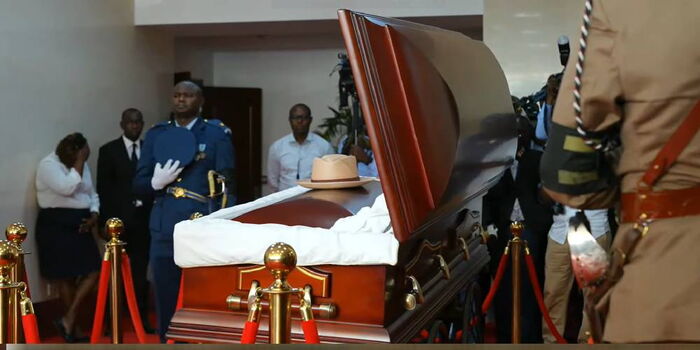Former Prime Minister Raila Odinga will be laid to rest at the Kang’o ka Jaramogi homestead in Bondo, close to the grave of his late father, Jaramogi Oginga Odinga.
His burial site has been carefully chosen within the family compound to maintain the long-standing Luo tradition of keeping departed family members close to their ancestors.
The burial details were made public on Thursday, October 16, by Raila’s elder brother and Siaya Senator, Oburu Odinga.
He confirmed that Raila will be buried beside his father’s mausoleum, just a few meters away. According to the funeral program, the burial will take place on Sunday, October 19.
Oburu further clarified that the ceremony will be strictly private, with attendance restricted to a small group of selected individuals.
However, he did not reveal who had been chosen to attend. Despite Raila’s status as a national leader, the family has opted for a modest and controlled send-off.
Raila’s Final Wishes and Burial Site
Initially, Raila had expressed a wish to be buried next to his late mother, Mary Juma Odinga, who passed away in 1984. However, the burial site was eventually shifted to a space closer to his father’s mausoleum to keep him near both parents.
After Oburu arrived at Raila’s Opoda Farm house in Bondo, he personally pointed out the exact location where the grave would be dug. The digging began at exactly 7:04 p.m., following Luo customs that often align burial timings with cultural symbolism.
The chosen spot is only five meters from Jaramogi’s resting place. There are also plans to construct a separate mausoleum for Raila, befitting his stature as a national statesman, liberation hero, and respected Luo elder.
Luo Cultural Rituals to Be Observed
As Raila is considered a senior Luo elder, several key traditional rituals will be performed to honor his transition into the ancestral realm.
In Luo culture, burials can take place inside or near the homestead, with grave placement depending on gender: men are buried on the right side of the main house, while women are placed on the left.
The burial rites are typically led by a senior elder or clan leader who conducts prayers, delivers blessings, and leads speeches.
During the ritual, libations—often traditional drinks or water—may be poured to honor the spirits of ancestors and ensure that the deceased has a peaceful journey to the spiritual world.
Tero Buru Cleansing Ritual
One of the most important rituals to be conducted is Tero Buru, an age-old Luo ceremony performed to cleanse the homestead and drive away the spirit of death.
This ritual is conducted in two separate phases—before and after the burial. Tero Buru usually involves a procession, singing, drumming, and symbolic acts that represent the restoration of peace and protection for the family left behind.
The ritual is not only about cleansing but also about unity. It brings the family and community together to honor the deceased while reaffirming social bonds among the living.
Final Resting Place Among Loved Ones
The Kang’o ka Jaramogi homestead is already the final resting place of several members of the Odinga family. Raila’s eldest son, Fidel Castro Odinga, who died in 2015, is buried there alongside other relatives, including Raila’s brothers and mother. Raila will now join them, securing his place within his ancestral lineage.
The burial will therefore not only mark the farewell of a political icon but also serve as a powerful cultural moment, blending personal wishes, family traditions, and deep-rooted Luo customs in a dignified and symbolic send-off.
Join Government Official WhatsApp Channel To Stay Updated On time
https://whatsapp.com/channel/0029VaWT5gSGufImU8R0DO30


